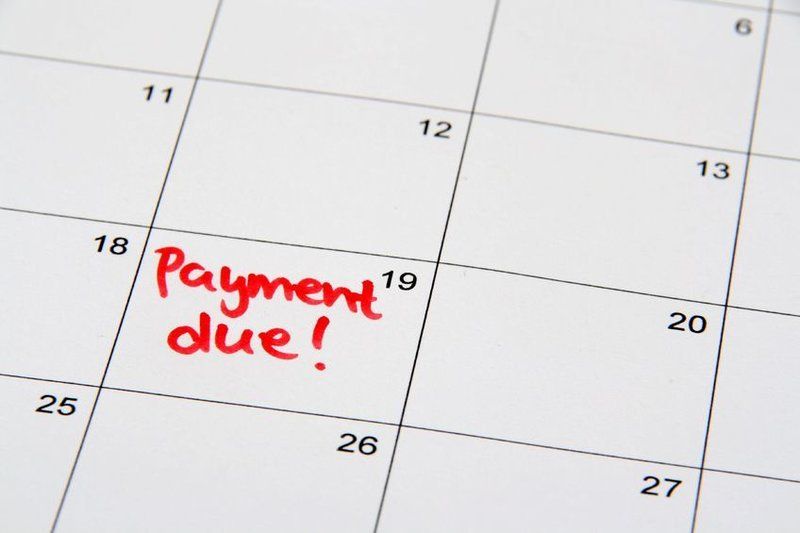4 apps to get clients to pay their bills (so you can pay yours)

Debtors and late-payers—the bane of every business owner.
No matter how profitable your business is, it won’t survive without good cash flow. If you can’t pay your bills on time, you may end up trading while insolvent. And that’s not just bad business—that’s illegal.
But to do that, you need your clients to pay their bills on time. And that’s something you can’t always rely on. Sometimes they forget. Sometimes they don’t have the money. And sometimes they just decide they don’t want to.
Unfortunately, you don’t get out of paying your bills simply because they haven’t paid theirs. So you have no choice but to:
a)
find out which clients are behind with their payments
b)
contact those clients and ask them to send through their payment.
Depending on how many clients you need to contact, that could take a while. And that’s assuming they pay up the first time you ask. What if you have to remind them several times? It can add up to a lot of time—time you’d be far better off spending on your business.
Fortunately, you can now use software to automate the entire process. Once you link it to your accounting system it will automatically search for any late-paying customers and send them a personalised reminder about their overdue payment.
Here are some of the apps currently available:
Chaser
Chaser sends your debtors reminder emails that look like personal emails from you. Merge fields in your email templates bring in information such as the customer name, invoice number and amount.
You can create differently worded templates for use with different customers so that the wording is appropriate for each relationship. You could choose to have formal wording with some customers, and more informal wording for those customers you have a closer relationship with.
You can select which days of the week to send out your debtor reminder emails and if a customer has more than one outstanding invoice, the system is smart enough to include mention of each invoice in the one email, rather than send one email per invoice.
Another time-saving feature is that Chaser will attach a PDF copy of the invoice(s) to the reminder email. That saves you time and speeds up payments because your customers don’t have to go searching for invoices.
Chaser also makes it easy to see the ‘chasing conversation’—the history of payment reminder emails—without you having to search through your inbox to work out what happened with a particular invoice. All invoice and payment-related information is displayed on the one screen.
Chaser
works with Xero accounting software.
Debtor Daddy
Debtor Daddy lets you set up a series of reminder emails to automatically send to customers both before and after the due date.
You can base your reminders on a number of different (debt) “collector” personas (“Audrey adds humour to her reminders”, “Harry is no frills, no nonsense, straight up and down”, etc.), and then tailor the wording of the emails used by each collector. You can then assign different collectors to different customers which not only customises the wording of the emails, but also the number and timing of reminder emails.
Debtor Daddy makes it easy to filter your outstanding invoices on how overdue they are, and from the Hit List view you can action further communication, change Collectors, see what reminders have gone out and what’s due to go out tomorrow, this week and so on.
Debtor Daddy works with Xero, MYOB and QuickBooks.
ezyCollect
If you’d like to send emails and SMS reminders to late-paying customers, then check out ezyCollect. It also lets you set up postal and telephone reminders, send a pre-approved legal letter and escalate the debt to a collection agency. You can even perform credit checks.
It includes a schedule (and adds the phone calls you need to make to customers), graphs and reports to see how much debt you’ve managed to recover.
ezyCollect works with Xero and MYOB.
Late Fee Manager
If your Terms and Conditions include fees or interest charges for late payment, Late Fee Manager might be just what you need. As well as sending reminders to late-paying customers, it will calculate and automatically apply to the original invoice any late fees or interest charges.
Late Fee Manager
works with Xero and QuickBooks.
This is by no means a complete list of what’s available. There are plenty of others, including Web Ninja Collect, InvoiceSherpa, xocashflow and Debtze. And they all offer a free trial, so you can try them all and decide which one will work best for your business.
To save you time in this process, we can advise you on which debtor management app is likely to be the best fit for your business based on the accounting app you are already using, or are considering switching to. Get in touch with us and we’ll make a time to sit down with you to run through your best options in this area.
You can’t afford to have late-paying customers putting your business’ cash flow at risk. And now, thanks to these software packages, you won’t need to.
Need help with your accounting?

If your business provides a car to an employee (or you’re the business owner/employee using it), there’s a good chance the Fringe Benefits Tax (FBT) rules apply. A car fringe benefit arises when a car owned or leased by an employer is made available for the private use of the business owner, an employee or their associate (such as a family member). “Private use” doesn’t just mean weekend road trips — it can include everyday commuting and even cases where the car is parked at an employee’s home, making it available for personal trips. Understanding how FBT is calculated and what records to keep is essential for compliance — and for avoiding paying more tax than necessary. What counts as a “car” for FBT purposes? The FBT law defines a car as a motor vehicle (except a motorcycle or similar) designed to carry less than one tonne and fewer than nine passengers. From 1 July 2022, some zero or low-emission vehicles are exempt from FBT, provided they meet certain criteria — for example, they must be first held and used after 1 July 2022 and must not have attracted Luxury Car Tax. Electric vehicle running costs, such as charging, are also exempt when the vehicle itself qualifies. Two main methods for calculating FBT on cars There are two ways to calculate the taxable value of a car fringe benefit. 1. Statutory formula method This method applies a flat 20% statutory rate to the base value of the car, adjusted for the number of days in the FBT year the car was available for private use. The formula is: (A × B × C ÷ D) − E A = Base value of the car (cost price plus GST and certain accessories, less registration, stamp duty and eligible reductions) B = Statutory fraction (generally 20%) C = Days available for private use D = Total days in FBT year (365) E = Employee contributions If the car has been owned for at least four full FBT years, the base value can be reduced by one-third. 2. Operating cost method This method calculates the taxable value by applying the private use percentage to the total operating costs of the car (actual and deemed costs). The formula is: Taxable value = [Operating costs × (100% − Business use %)] − Employee contributions Operating costs include: Fuel, oil, repairs, maintenance, registration and insurance Lease costs (for leased cars) Deemed depreciation (25% diminishing value) and deemed interest for owned cars Certain costs, such as tolls, car parking and insurance-funded repairs, are excluded. The business use percentage is determined by odometer readings, logbook records, and a reasonable estimate based on usage patterns. The three-month logbook requirement (operating cost method only). If you use the operating cost method, you must keep a logbook for at least 12 continuous weeks (roughly three months) to record: The date of each trip Odometer readings at the start and end Total kilometres travelled Whether the trip was for business or private purposes The purpose of each business trip This logbook is generally valid for five years, but you must start a new one if usage patterns change significantly (e.g., a role change, relocation or different duties). You also need to record odometer readings at the start and end of each FBT year. Why record-keeping matters. Keeping accurate records can support a higher business use percentage (and therefore a lower FBT bill). They also ensure you claim only legitimate business kilometres and help you provide evidence if the ATO reviews your FBT calculation. Finally, your records help you decide which calculation method (statutory or operating cost) is more tax-effective. Key takeaways for businesses and employees. If a car is available for private use, FBT may apply — even if the car isn’t driven often for personal trips. Electric cars may be FBT-exempt if they meet eligibility criteria, but you may still need to calculate their taxable value for reporting purposes. The operating cost method often works better if business use is high — but only if you have a compliant logbook. Keep odometer readings, expense records and a valid logbook to support your claims. Need help with your FBT obligations? Get it at Ascent Accountants. We guide business owners through every step of FBT compliance — from choosing the right valuation method to maintaining the right records for ATO peace of mind. If you provide cars to employees or use a company vehicle yourself, now is the time to review your FBT position before the next FBT year rolls over. Let’s talk .

Hey FIFO workers. You work hard for your money. Let’s make it work hard for you this EOFY. Tax time it’s your chance to set yourself up for long-term financial security. From deductions and super to loan reviews and goal setting, our FIFO EOFY checklist can help you turn your hard-earned income into lasting wealth.

Selling property in Australia? Don’t forget your Clearance Certificate — it could SAVE you THOUSANDS at settlement. If you don’t have one, the buyer is legally required to withhold part of your payment — delaying and reducing what you receive. Applying is free and easy — and Ascent Accountants can help you get it sorte





